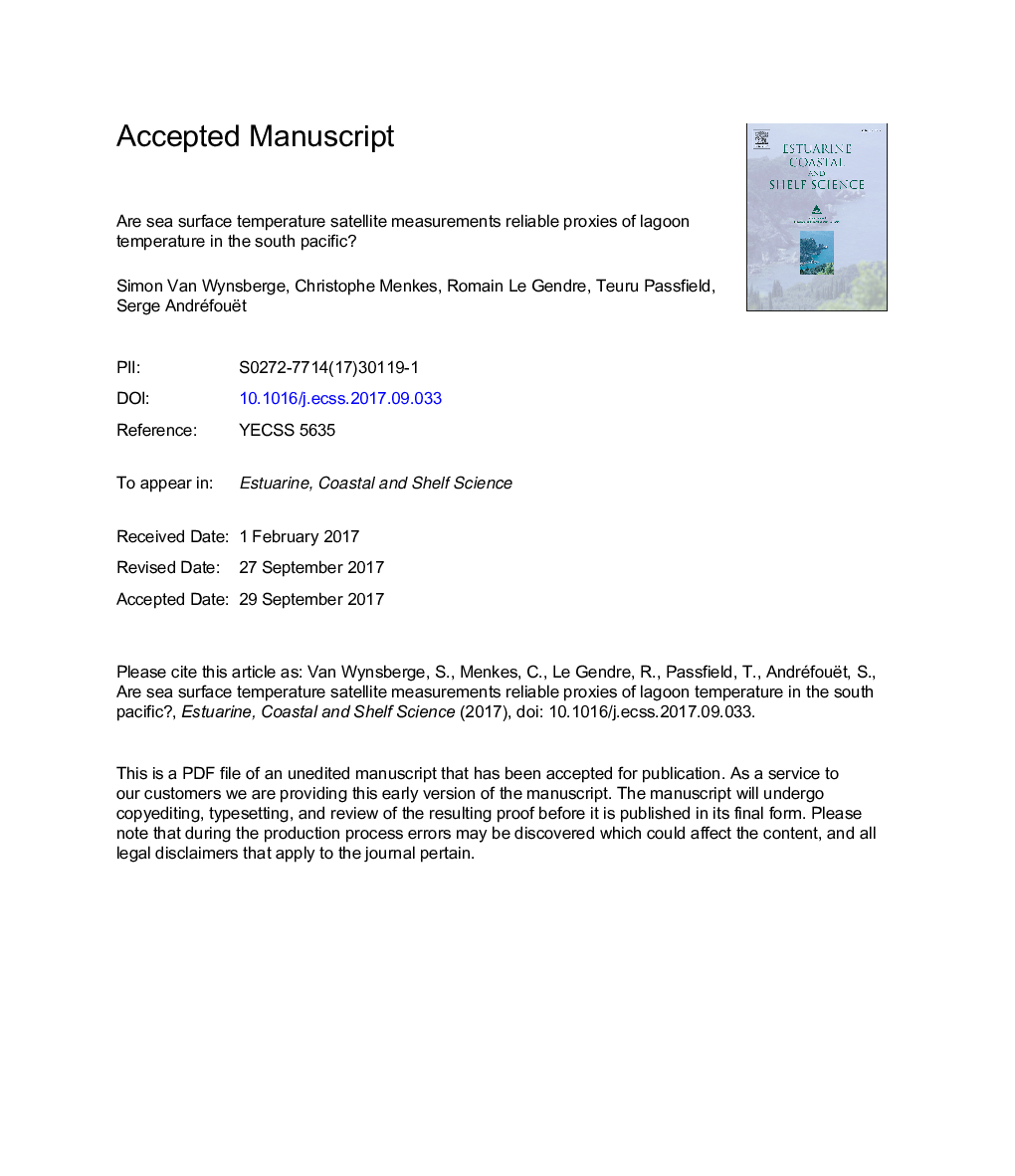| Article ID | Journal | Published Year | Pages | File Type |
|---|---|---|---|---|
| 5765017 | Estuarine, Coastal and Shelf Science | 2017 | 38 Pages |
Abstract
In remote coral reef environments, lagoon and reef in situ measurements of temperature are scarce. Sea Surface Temperature (SST) measured by satellite has been frequently used as a proxy of the lagoon temperature experienced by coral reef organisms (TL) especially during coral bleaching events. However, the link between SST and TL is poorly characterized. First, we compared the correlation between various SST series and TL from 2012 to 2016 in three atolls and one island in the Central South Pacific Ocean. Simple linear correlation between SST and TL ranged between 0.44 and 0.97 depending on lagoons, localities of sensors, and type of SST data. High-resolution-satellite-measurements of SST inside the lagoons did not outperform oceanic SST series, suggesting that SST products are not adapted for small lagoons. Second, we modelled the difference between oceanic SST and TL as a function of the drivers of lagoon water renewal and mixing, namely waves, tide, wind, and season. The multivariate models reduced significantly the bias between oceanic SST and TL. In atoll lagoons, and probably in other hydrodynamically semi-open systems, a correction taking into account these factors is necessary when SST are used to characterize organisms' thermal stress thresholds.
Related Topics
Physical Sciences and Engineering
Earth and Planetary Sciences
Geology
Authors
Simon Van Wynsberge, Christophe Menkes, Romain Le Gendre, Teuru Passfield, Serge Andréfouët,
